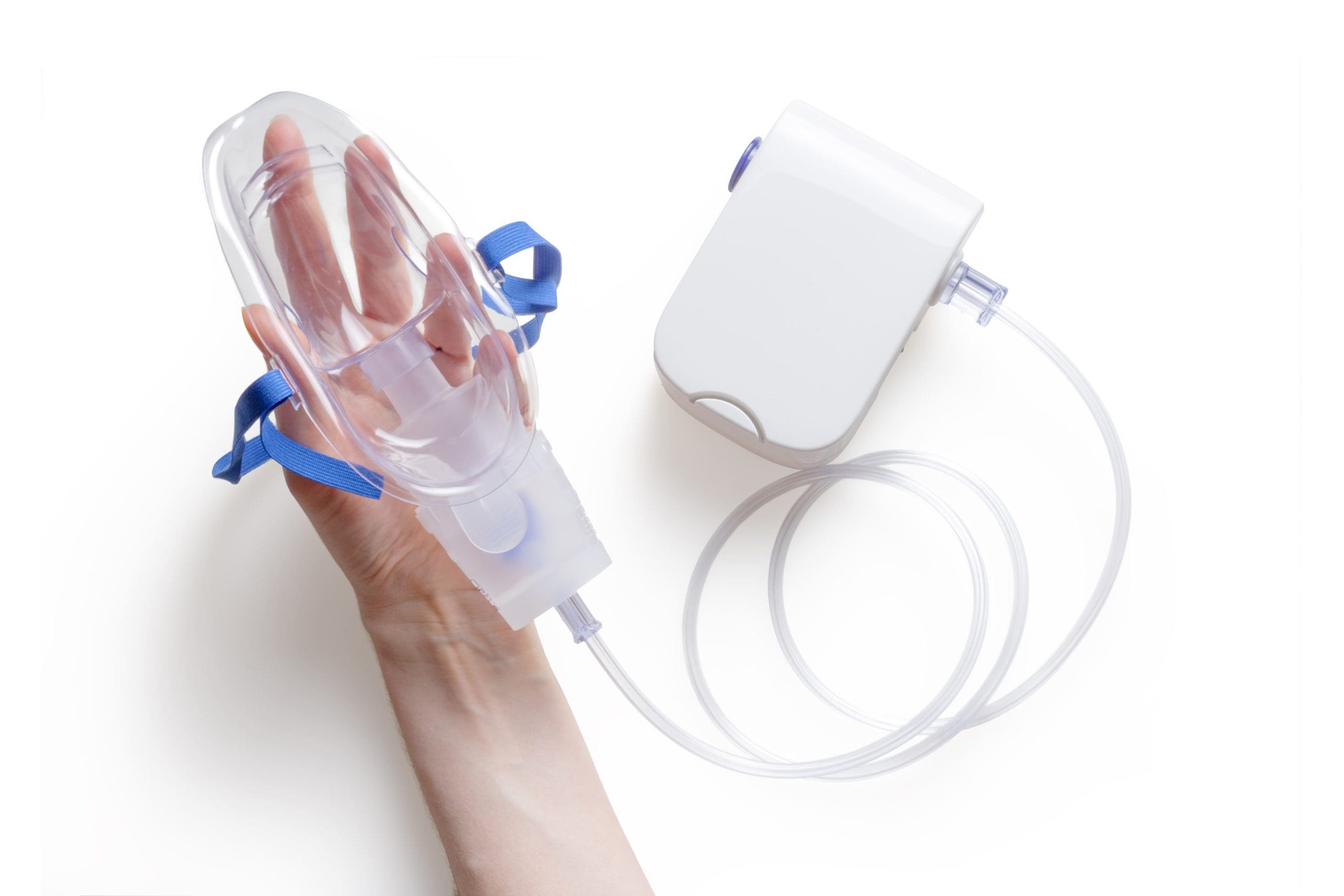Marion Ridley, 62, comes to the emergency department (ED) complaining of difficulty breathing. As you help her onto the stretcher, you note she is anxious and tachypneic, with a nonproductive cough. Her vital signs are temperature 100.5° F (38.1° C), blood pressure 142/88 mm Hg, heart rate 124 beats/minute (bpm), and respiratory rate 28 breaths/minute; her room-air oxygen saturation (O2 sat) is 84%. Per protocol, you administer oxygen by nasal cannula at 2 L/minute.
History and assessment hints
You learn Mrs. Ridley has a history of chronic obstructive pulmonary disease (COPD) secondary to a 30-pack-year smoking history, hypertension, and heart failure (HF). She reports she has had a cold for the past week and her feet and ankles have been swollen. On examination, you find she is using accessory chest muscles to breathe and has loud expiratory wheezes. She coughs frequently but isn’t producing sputum.
On the scene
When you note that the supplemental oxygen has raised the patient’s O2 sat only to 88%, you call the ED physician to the bedside immediately. She orders a STAT arterial blood gas (ABG) test, chest X-ray, electrocardiogram (ECG), complete blood count, and complete metabolic profile. The respiratory therapist replaces the nasal cannula with a Venturi mask delivering 50% oxygen.
ABG results show blood pH at 7.30, partial pressure of arterial carbon dioxide (Paco2) at 62 mm Hg, and partial pressure of arterial oxygen (Pao2) at 60 mm Hg. The chest X-ray reveals a right lower lobe infiltrate. Mrs. Ridley’s ECG is normal; all other test results are pending.
On 50% oxygen, her O2 sat improves slightly to 90%. The physician orders albuterol 2.5 mg by medication nebulizer, methylprednisolone 125 mg I.V. now and repeated every 6 hours, and a one-time dose of furosemide 40 mg I.V. The respiratory therapist brings a noninvasive bilevel positive-airway pressure (BiPap) machine to the bedside, to be used as ordered if Mrs. Ridley’s ABG and O2 sat values don’t improve.
Outcome
Thirty minutes later, Mrs. Ridley is breathing more comfortably. Although she remains tachycardic, her respiratory rate has dropped to 20 bpm. A repeat ABG test shows improvement: pH 7.33, Paco2 55 mm Hg, and Pao2 72 mm Hg. Her O2 sat has increased to 93%, her wheezes have diminished, and she is less anxious.
Based on her elevated white blood cell count of 14,000/mm3, the physician orders antibiotics for presumptive community-acquired pneumonia. As ordered, you give ceftriaxone 1 g I.V. and azithromycin 500 mg I.V. daily. The patient is now stable enough to be transferred to a general medical unit without needing BiPap.
Three days later, Mrs. Ridley requires just 2 L of oxygen by nasal cannula to maintain her O2 sat above 90%. Her methylprednisolone I.V. dosage is tapered and then replaced with oral prednisone.
Education and follow-up
Mrs. Ridley’s admission ABGs showed she was developing respiratory failure. By acting quickly, you and the other team members were able to reverse her symptoms and avert a respiratory crisis.
You tell her she experienced a COPD exacerbation that most likely resulted from pneumonia. On discharge, you offer her pneumonia and influenza vaccinations. You advise her to complete her antibiotic regimen and to complete steroid tapering as ordered. You counsel her on the benefits of smoking cessation and pulmonary rehabilitation. She may need temporary home oxygen therapy; you provide safety instructions on its use. Also, you make sure she has an adequate supply of her prescribed medications—hydrochlorothiazide, metoprolol, lisinopril, digoxin, potassium chloride, Advair 250/50, and Combivent metered-dose inhaler.
Finally, you advise her to contact her healthcare provider if her feet or ankles swell. You teach her to weigh herself daily and to report weight gain or shortness of breath.
Visit www.AmericanNurseToday.com/Archives.aspx for a list of selected references.
Mary Lu Daly is a clinical nurse specialist at F.F. Thompson Hospital in Canandaigua, New York.



















1 Comment.
We see this frequently in our department. Thanks so much for a practical article on how to deal with this challenging disease.